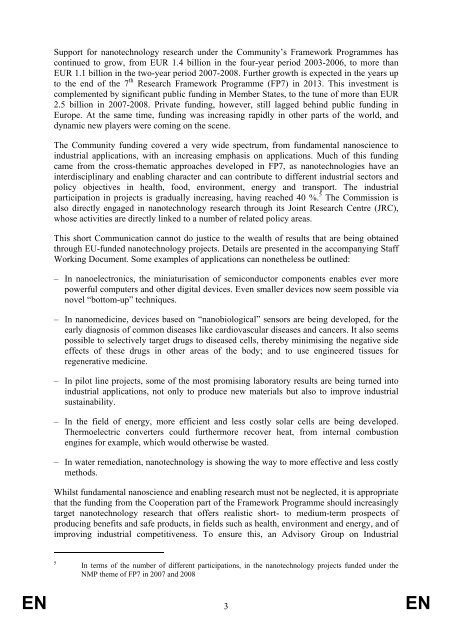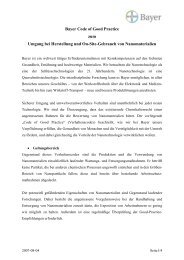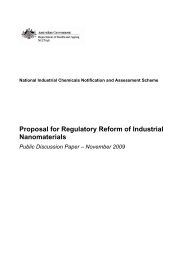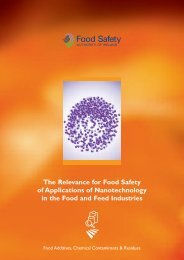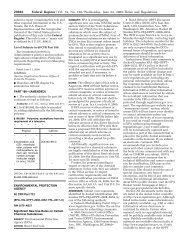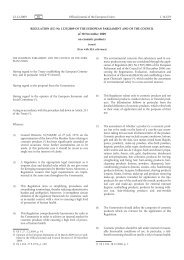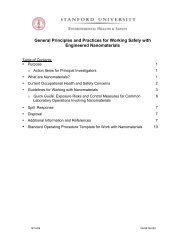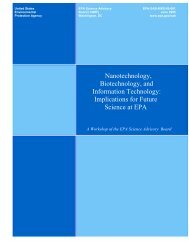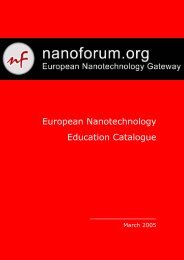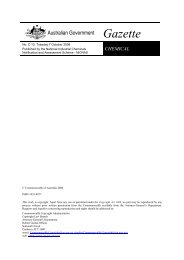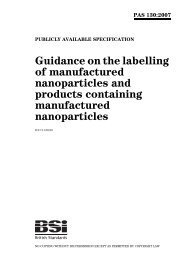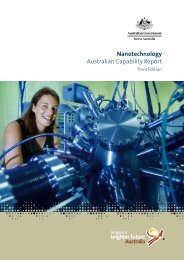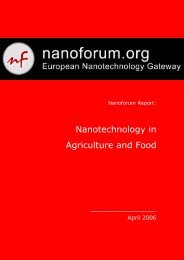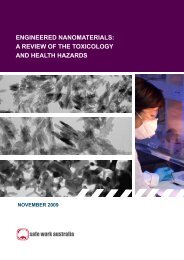Nanosciences and Nanotechnologies: An action plan for ... - EUR-Lex
Nanosciences and Nanotechnologies: An action plan for ... - EUR-Lex
Nanosciences and Nanotechnologies: An action plan for ... - EUR-Lex
You also want an ePaper? Increase the reach of your titles
YUMPU automatically turns print PDFs into web optimized ePapers that Google loves.
Support <strong>for</strong> nanotechnology research under the Community’s Framework Programmes hascontinued to grow, from <strong>EUR</strong> 1.4 billion in the four-year period 2003-2006, to more than<strong>EUR</strong> 1.1 billion in the two-year period 2007-2008. Further growth is expected in the years upto the end of the 7 th Research Framework Programme (FP7) in 2013. This investment iscomplemented by significant public funding in Member States, to the tune of more than <strong>EUR</strong>2.5 billion in 2007-2008. Private funding, however, still lagged behind public funding inEurope. At the same time, funding was increasing rapidly in other parts of the world, <strong>and</strong>dynamic new players were coming on the scene.The Community funding covered a very wide spectrum, from fundamental nanoscience toindustrial applications, with an increasing emphasis on applications. Much of this fundingcame from the cross-thematic approaches developed in FP7, as nanotechnologies have aninterdisciplinary <strong>and</strong> enabling character <strong>and</strong> can contribute to different industrial sectors <strong>and</strong>policy objectives in health, food, environment, energy <strong>and</strong> transport. The industrialparticipation in projects is gradually increasing, having reached 40 %. 5 The Commission isalso directly engaged in nanotechnology research through its Joint Research Centre (JRC),whose activities are directly linked to a number of related policy areas.This short Communication cannot do justice to the wealth of results that are being obtainedthrough EU-funded nanotechnology projects. Details are presented in the accompanying StaffWorking Document. Some examples of applications can nonetheless be outlined:– In nanoelectronics, the miniaturisation of semiconductor components enables ever morepowerful computers <strong>and</strong> other digital devices. Even smaller devices now seem possible vianovel “bottom-up” techniques.– In nanomedicine, devices based on “nanobiological” sensors are being developed, <strong>for</strong> theearly diagnosis of common diseases like cardiovascular diseases <strong>and</strong> cancers. It also seemspossible to selectively target drugs to diseased cells, thereby minimising the negative sideeffects of these drugs in other areas of the body; <strong>and</strong> to use engineered tissues <strong>for</strong>regenerative medicine.– In pilot line projects, some of the most promising laboratory results are being turned intoindustrial applications, not only to produce new materials but also to improve industrialsustainability.– In the field of energy, more efficient <strong>and</strong> less costly solar cells are being developed.Thermoelectric converters could furthermore recover heat, from internal combustionengines <strong>for</strong> example, which would otherwise be wasted.– In water remediation, nanotechnology is showing the way to more effective <strong>and</strong> less costlymethods.Whilst fundamental nanoscience <strong>and</strong> enabling research must not be neglected, it is appropriatethat the funding from the Cooperation part of the Framework Programme should increasinglytarget nanotechnology research that offers realistic short- to medium-term prospects ofproducing benefits <strong>and</strong> safe products, in fields such as health, environment <strong>and</strong> energy, <strong>and</strong> ofimproving industrial competitiveness. To ensure this, an Advisory Group on Industrial5In terms of the number of different participations, in the nanotechnology projects funded under theNMP theme of FP7 in 2007 <strong>and</strong> 2008EN 3 EN


